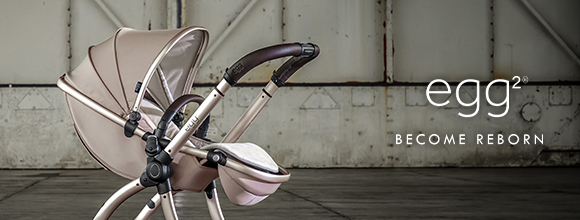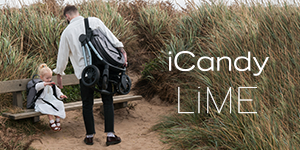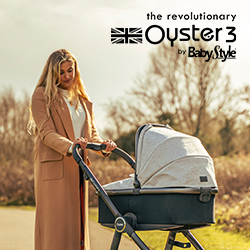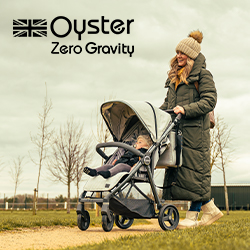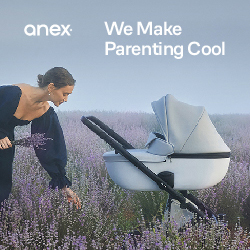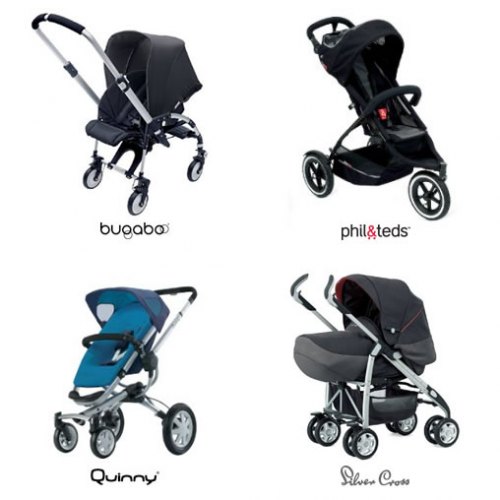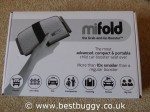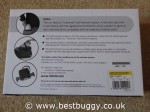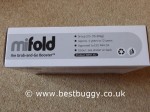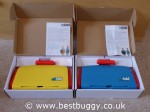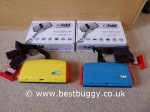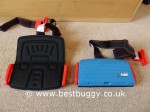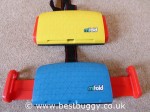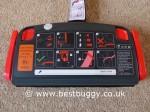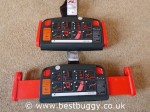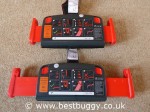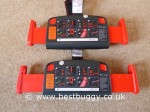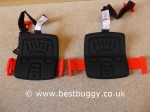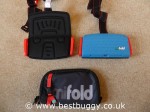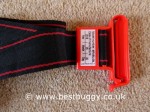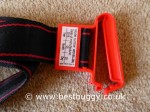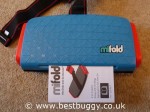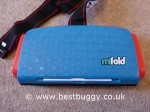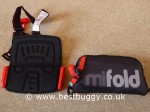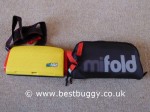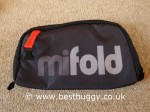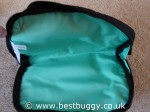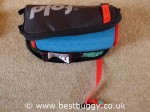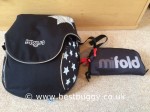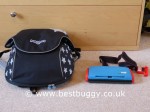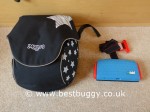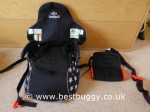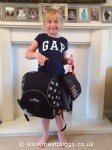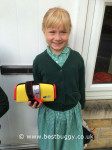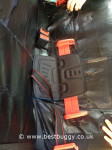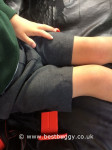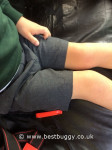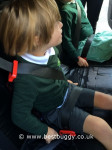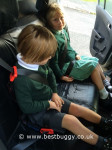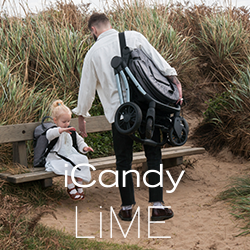Mifold – the Grab-and-Go Booster Cushion
We are the biggest advocates of finding the safest car seat for your children. Our advice is always that a child should remain in a High Backed Booster seat until they reach 135cm, and ideally 150cm tall. This has to be the safest option for your child to give them maximum protection in the event of an impact. However, sometimes as a parent, you have to make tough decisions, which may not be your ideal, but are the best solution for your situation. Sometimes, particularly when travelling on public transport, a High Backed Booster seat is not a practical option.
Booster Cushions v’s High Backed Booster Seats
For clarity, a booster cushion is defined as a backless car seat. A seat with a back fitted above the seat cushion, is a high backed booster seat (HBB).
Secondly booster cushions are not illegal, and they are highly unlikely to be, because the future for older children (over 22kg) IS likely to be a booster cushion.
What is happening with the law?
Booster cushions, such as the Trunki BoostApak and the Mifold are certified under the current R44/04 child car seat regulations. This regulation currently allows use of these booster cushions from 15kg. This means that heavy children, as young as 20 months, could at present, legally use a booster cushion in a car. One of the issues with the cheaper booster cushions on the market is there is no height adjustment made to ensure a correct fit for a child. Both the BoostApak, and the Mifold importantly have a shoulder strap, which brings the seat belt down to the child’s height. However, this needs to be used correctly for it to give the child the protection required. We have often seen parents not use this all important shoulder clip.
It does seem crazy that such young children can be placed on a cheap booster cushion, with no shoulder adjustment, and that this is legal. This is absolutely what needs to be changed.
Booster cushions also lack side, head and shoulder protection which is especially important the younger a child is.
For a long time the Government advice on their website was that booster cushions should not be used for a child under 22kg, but this changed earlier in 2016 to state 15kg as a minimum. This was probably to clarify the long standing anomaly between booster cushions being safety certified as legally safe to use from 15kg, and the government saying they should not be used until 22kg.
However, the Government plan to address this next year with a change in car seat regulations. When this happens, all newly produced booster cushions will be illegal to use for children under 22kg and under 125cm tall. Children over 22kg and over 125c tall may still use a booster cushion in vehicles.
HOWEVER, if you already own a booster cushion which bears an R44/04 Group 2 label – like our BoostApak and Mifold do (because they were purchased before the change), then it will still be legal for these older booster cushions to be used for children from 15kg and the parents will not be breaking the law.
Why is the future for older children a booster cushion? For this we need to explain i-Size a little more.
The Mifold was launched onto the crowd-funding stage at the end of last year. Their product has been set against a background call of ‘Bin the Booster’ from leading car seat manufacturer. However, we have been careful not to join in with what seems at first to be a logical step in making children safer, for two reasons. First of all, we would have felt like hypocrites, because for some parents, in some circumstances, a booster cushion is not ideal, but it is better than nothing at all. A booster cushion will never give a child the protection that a high backed booster seat will, but a high backed booster seat is not always practical or even possible. Sometimes, although we hate to say it, anything suitable is better than nothing, even if it isn’t necessarily the best. We have had to make a number of other car seat compromises so far, simply to ensure the safety of our son who has additional needs, and doesn’t understand safety like a typical child. However, all decisions are informed thanks to friends in the car seat industry, and we do our best to keep our children as safe as we can.
Secondly, we know that the world of car seats is changing. i-Size (R129) is the new child car seat regulation. However i-Size is not simply to do with car seats, it is to do with all round safety in the car. Cars will not be able to achieve a 5 star Euro NCAP rating if they are not i-Size compliant. Thus, all cars are being improved up to i-Size standard, and until this is done, children will not truly benefit from i-Size. In future, we will all have i-Size cars, into which you fit i-Size car seats. Not all i-Size child safety seats will fit all i-Size cars and manufacturers have to give advise about suitable seats for the space in the rear of their cars for child safety seats. i-Size cars are going to have extra protection built into them, so that in future, child car safety seats will not need to be so protective, because the car itself will protect the child instead. The protection will be built into the doors, and also the shape of the rear car seats. We admit to not knowing much about the future for children in the Group 3 age group, and indeed i-Size is still evolving, but from what we understand, in future, children in Group 3 ie. over 22kg will be seated on booster cushions, rather than High Backed Booster seats, because the seat cushions of the car will be shaped to support older children without the need for a back on a child safety seat. So, bizarrely, whilst at present, booster cushions are not recommended, one day, not too far away, booster cushions may actually become the future and the norm for older children. We stress this is all still evolving. Meanwhile it is worth nothing that in theory i-Size seats are supposed to be safer, because i-Size testing now includes side impact testing, which will certainly improve the quality of cheaper products. However this really depends on the seats. There are some good quality R44/04 tested seats which are currently out performing i-Size seats in comparative crash tests done by ADAC / Stiftung Warentest. With no date to change over to R129, it is worth looking at crash test results rather than simply buying a product with an i-Size label on it.
Why do we use Booster Cushions for our children?
Our children both have a high backed booster seat in our car. However, they both get a taxi to school each day on account of their individual medical needs, and due to the distance that we live from school. We were horrified to find that LEA school transport does not require children to have any form of car seat. Taxi’s are exempt from car seat laws. After a bit of digging into seat belt law, we discovered that if the child has a car seat with them, then the taxi driver has a responsibility to ensure the child uses it. It is a fair distance from the school gate into the cloakrooms, so carrying two High Backed Booster car seats was not feasible, especially with a child with mobility and balance issues, and another carrying a heavy medical bag and a musical instrument. So, we investigated various booster seat / booster cushion options including a Bubblegum, before buying each child a Trunki BoostApak. These have been absolutely brilliant, and have done the job well. However, there is no denying that they are large bulky items for a small child to carry, in and out of school each day. We have also had concerns that our afternoon escort was struggling to put the BoostApak shoulder clip properly in position, and that she did not appreciate that it was important that the shoulder strap was fitted on the correct side for the seat belt.
Master BB had just started school when Mifold was launched. He was a tiny (but heavy) 5 year old and was struggling with the size and weight of his Boostapak. School also struggled to store them, and Little Miss BB’s cover got wrecked with children constantly standing on her seat in the school cloakroom. So for us us it was an absolute must to get some Mifold’s, and see what we thought of the suitability for ourselves.
When our Mifold booster cushions arrived at BBHQ. We were all amazed just how tiny the Mifold is. Mr BB didn’t believe that there were booster cushions in such a tiny box and he even placed a bet that I had the wrong box! That’s how small and light these seats are!
The Mifold is really an incredible item. It is a small folded piece of plastic with a hidden sheet of aircraft grade aluminum and some padding, which fits neatly into a single hand, and yet has passed the stringent ECE R44/04 child car seat safety tests. The packaging says that this is a Group 2/3 car seat, for children aged 4-12, weighing 15-36kg. At this point it is worth noting that the Government used to recommend that booster cushions were only used from 22kg. This advice got removed from their website earlier this year with the i-Size update, but we believe that there will be amendments, probably late in 2016 to make the use of booster cushions for Group 3 only i.e. for children over 22kg. Both Master BB and Little Miss BB are both over this 22kg threshold.
So, what is the Mifold really like? It is a robust plastic and aircraft grade aluminum sheet which folds in half to a teeny 25 x 12 x 4cmcm. It feels good quality, but at the same time it is basic and functional. The Mifold comes folded like a clamshell. There is no catch to undo, but to be neat and tidy we wind the shoulder strap around the centre of the seat to keep it closed. The Mifold opens effortlessly to form a flat, black pad. It is like sitting on a thick plastic book with some padding on. The fabric has almost a suede feel to it, but it is studded with hundreds of tiny rubber dots. We assume this is to provide a non-slip surface for small bottoms to stay securely on the seat pad. The padding is dense with not much give in it, but it does provide cushioning. Our children have had no grumbles about sitting on their Mifold’s.
Simply unfold the seat. Place the rear of the seat up against the back of the car seat (if there is a ledge at the rear of the seat, then the Mifold should be angled up to meet the seat back). The shoulder strap is attached centrally at the rear onto which is a red plastic clip. This strap needs keeping at the rear of the child. At each side of the seat are red side wings with a curl of a red plastic seat belt guide. These need to be pulled out using two sliders underneath the seat. Little Miss BB aged 7 can do this easily. We don’t find these particularly logical to do, and if you forget to extend the wings before the child jumps on board, then you have to remove the child to slide them. The side wings extend through three positions (so four in total). This is where there is another flaw in the design. If you knock one of these side wings, then it pushes inwards. These really should have been ratcheted so that they clicked into each position more definitively than they currently do. The red plastic seat belt guides should be near, but not touching the child’s thighs. The issue with this, is that it can be difficult then to get the seat belt through the guides as they are too close to the child. We find it is easier to pull the side wings completely out; then thread the seat belt through both red guides; push the side wings into the correct size; tighten the lap part of the seat belt; pull the belt tight, and then secure the red clip on the seat belt just above the child’s shoulder. The red clip has an easy to adjust clip which makes it simple to transfer the shoulder height between vehicles.
There is a tiny pocket to keep the instructions in (although this is not secure and the instructions will slide out). There is space on the base of the Mifold to write the child’s name.
At just 23.5 x 12 x 4.5 cms and just 750g the Mifold will slide into any school bag easily – even the ubiquitous standard school book bag, which then fits neatly inside a standard school drawer. We paid extra for the special Mifold storage bags. They are a little fiddly to put the seat into, and to get the zip done up, and we don’t use the bags every day, however, it is good to have the option for travelling. We like the carry handle on the bag.
The product appears to be robust. It is simple, but the simplicity is the beauty of it. We know that Mifold has passed British Safety Standards, and we believe has outperformed some other booster seats. We know a booster cushion isn’t ideal or the best solution for child travel, however, it fills a gap in the market and gives no parent, childminder, carer, car pool, grandparent or taxi driver any excuse not to have an older child on a safety seat. The Mifold will slide easily into a glove box, or under a seat, ready for that time you need to give a lift to another child. Ours has been handy for a coach trip too. It was light and easy to carry around with us all day.
We have been using the Mifold to and from school every day now since the start of the new school year. Just look how happy Little Miss BB is! You can see the difference the Mifold’s makes to our children each day on their school run. It is much easier for them to carry the Mifold in their book bags each day. The simplicity of the design is making it easier for the the taxi escorts, who take the children to and from school, to be able to use the Mifold easily without making errors which could compromise the safety of our children. The shoulder strap is now likely to be used correctly by the taxi escorts which is a huge relief for us. Due to the centrally placed shoulder strap, it is not issue which side of the vehicle the children sit, because the Mifold works equally well on both sides. No need to swap the strap like we had to on the BoostApak.
Although we loved the idea of the Mifold, we were also skeptical because logically car seat safety says that a bit of plastic and metal with a strap on should not be sufficient to secure a child safely. However, we have been very impressed how securely the lap strap holds the children in position, at a size that is tailored to them – this is probably the most surprising thing about the Mifold. Everyone who has tried the Mifold has agreed that they feel the children are held securely. The car seat belt is brought down to the children’s shoulder height. Our Mifold’s have also travelled on coach trips where the seats had to be removed at the end and carried all day. This would not be possible with a regular booster seat.
We would not advocate Mifold as a full time replacement for a high backed booster car seat. However, if you have a reason to get a Mifold, then definitely take a look. It is a brilliant invention which will be useful to many.
Find out more: https://www.mifold.com/how-it-works
- Kiddy Cruiserfix 3 Review by Best Buggy
- Recaro Zero. 1 Elite Car Seat
- Jané Matrix Light Review
- Child Car Seats - Real Life v's Theory.
- Cozy 'n' Safe Excalibur v's Apramo One v's Diono Radian 5
- Maxi-Cosi Rodifix Air Review by Best Buggy
- Mifold - the Grab-and-Go Booster Cushion
- Finding the Right Car Seat for a Child with Additional Needs
- Juniair Go Booster Inflatable Child Car Seat
- BeSafe iZi Modular & Visit to TRL Child Safety Centre
- Mifold Booster Cushion Car Seat
- CasualPlay Q-Retraktor Review by Best Buggy
- Cosatto Zoomi Review by Best Buggy
- Cosatto Hootle Review by Best Buggy
- Cosatto Hug Review by Best Buggy
- Kiddy Evo-lunafix Review by Best Buggy
- The Introduction of the 2015 i-Size Car Seat Regulation
- Maxi Cosi Axiss Fit Review - Submitted to Best Buggy
- Best Buggy's Car Seat Safety Tips and Advice
- Why Babies Should Travel Laid Flat In A Car Seat Infant Carrier.
- Simple Parenting Doona Car Seat Stroller Review by Best Buggy
